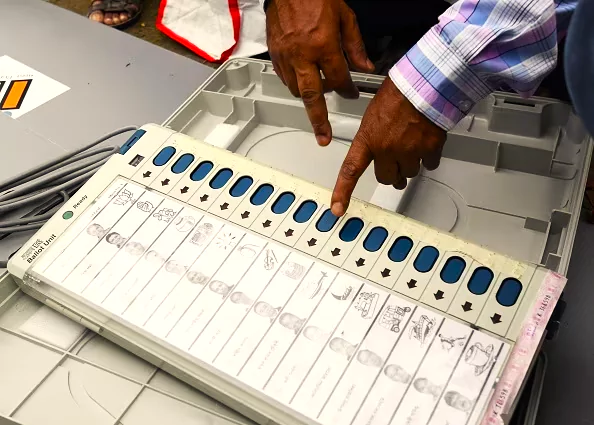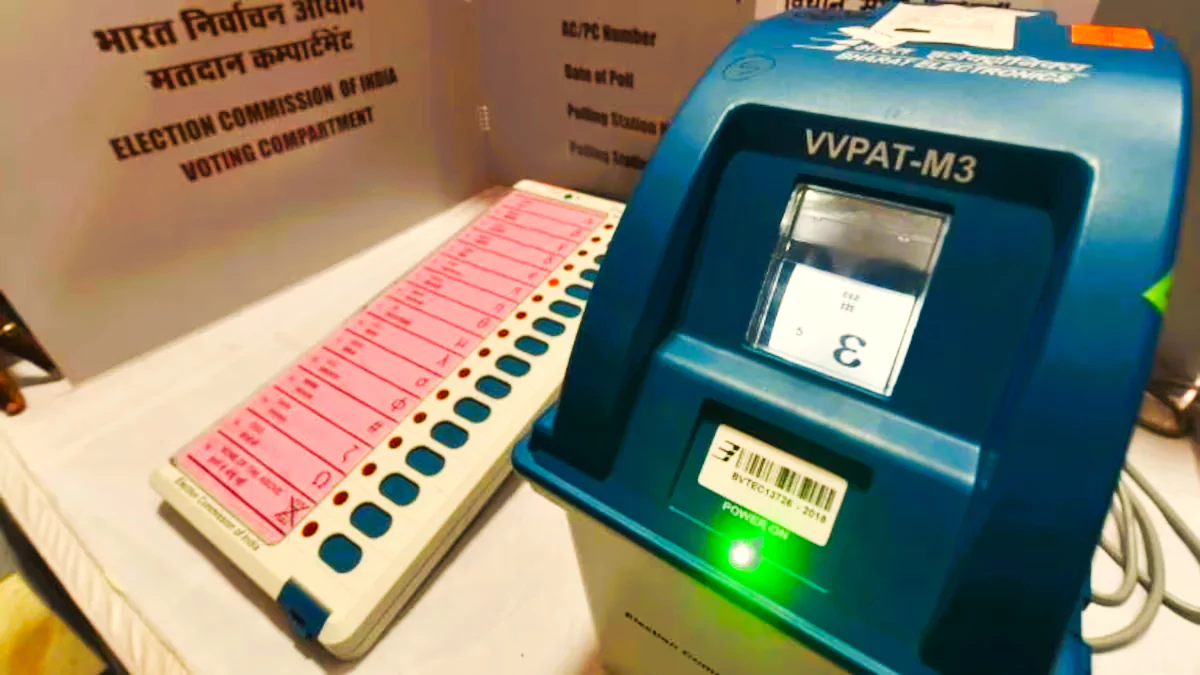Context:
The Election Commission of India (ECI) begins a nationwide awareness programme on EVMs and VVPATs ahead of the 2024 Lok Sabha Election.
ECI Begins a Aation-Wide Awareness Programme on EVMs and VVPATs Ahead of 2024 Lok Sabha Elections
- Reach: The programme includes outreach and awareness activities in 3464 Assembly Constituencies spread across 613 Districts in 31 States/UTs.
- State Chief Electoral Officers need to start a focussed awareness campaign approximately 3 months prior to the announcement of election.The campaign shall have three components:
- EVM Demonstration Centers (EDC)
- Mobile Demonstration Vans (MDV)
- Digital outreach
EVM Vs VVPAT
-
EVM Machine Or Electronic Voting Machine:
-
- Design: It comprises two units: the control unit and the balloting unit.
- These units are joined together by a cable. The control unit of the EVM is kept with the presiding officer and the balloting unit is kept within the voting compartment for electors to cast their votes.
- History: It was used in 1982 Kerala elections on a pilot basis and The 2004 Lok Sabha election was conducted completely using EVMs
- Legal Sanction: Section 61A was included in the Representation of the People Act 1951, empowering the ECI
- Manufacturer: Bharat Electronics Ltd. (BEL), Bangalore, a Defence Ministry PSU, was elected along with ECIL to manufacture the EVM.

EVM Machine
-
VVPAT Or Voter Verifiable Paper Audit Trail
-
- It is a system attached to EVMs and works by printing a paper slip containing the serial number, name, and symbol of a candidate for whom a vote has been cast.
- After being visible for seven seconds through a transparent window, the printed slip is automatically cut and drops in.
- It was first used in the Noksen constituency in Nagaland in 2013 and used at an all India level in the 2019 Lok Sabha Elections.
- VVPAT machines can be accessed by polling officers only.

VVPAT Machine
Judicial Pronouncements on Use of EVMs
- People’s Union for Civil Liberties v. Union of India, (2013): NOTA option included in the EVMs to enable the voters to exercise their right of not to vote while maintaining their right of secrecy.
- Subramanian Swamy v. Election Commission of India, (2013): Supreme Court held that “paper trail” is an indispensable requirement of free and fair elections paving the way for the introduction of VVPAT
- N. Chandrababu Naidu v. Union of India, (2019): The SC held that 5 VVPAT per Assembly Constituency or Assembly Segments in a Parliamentary Constituency would be verified manually.
|
Also Read: Simultaneous Elections
News Source: PIB
![]() 19 Jan 2024
19 Jan 2024

